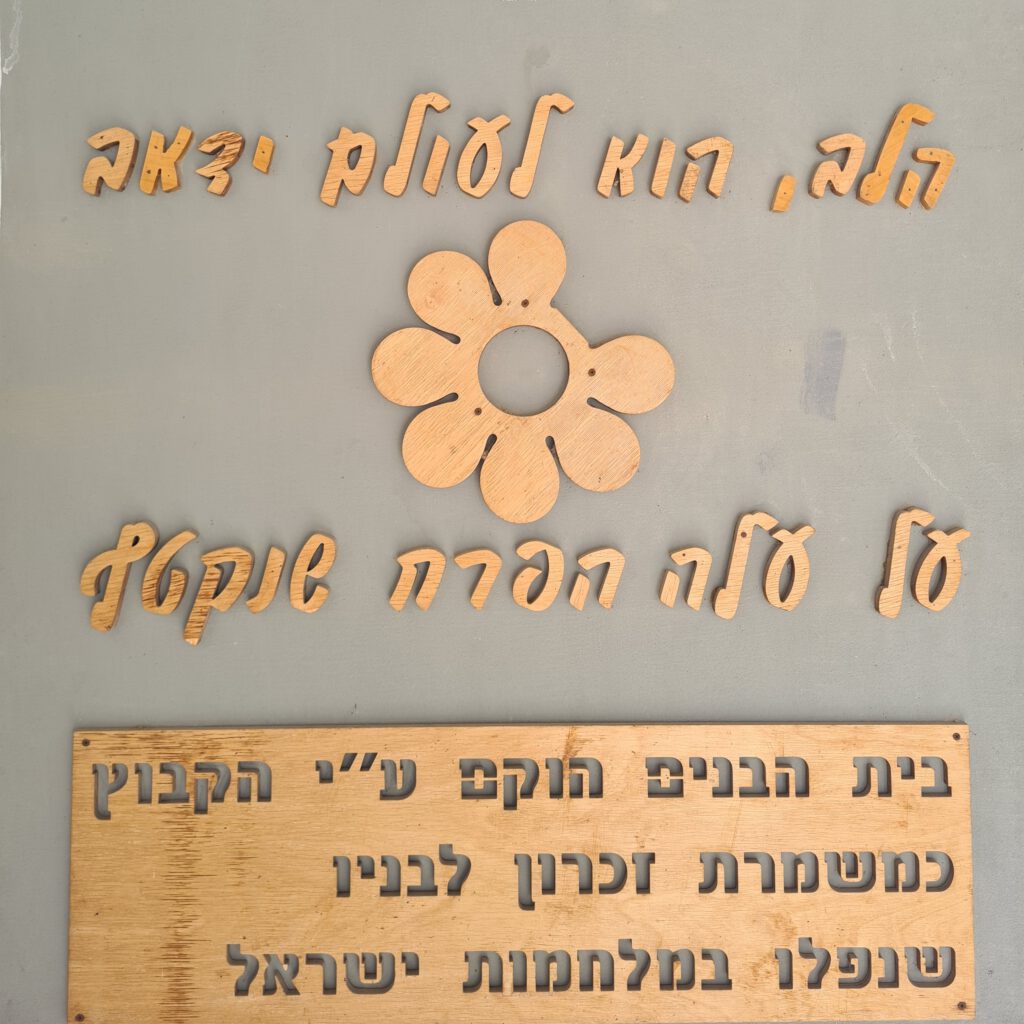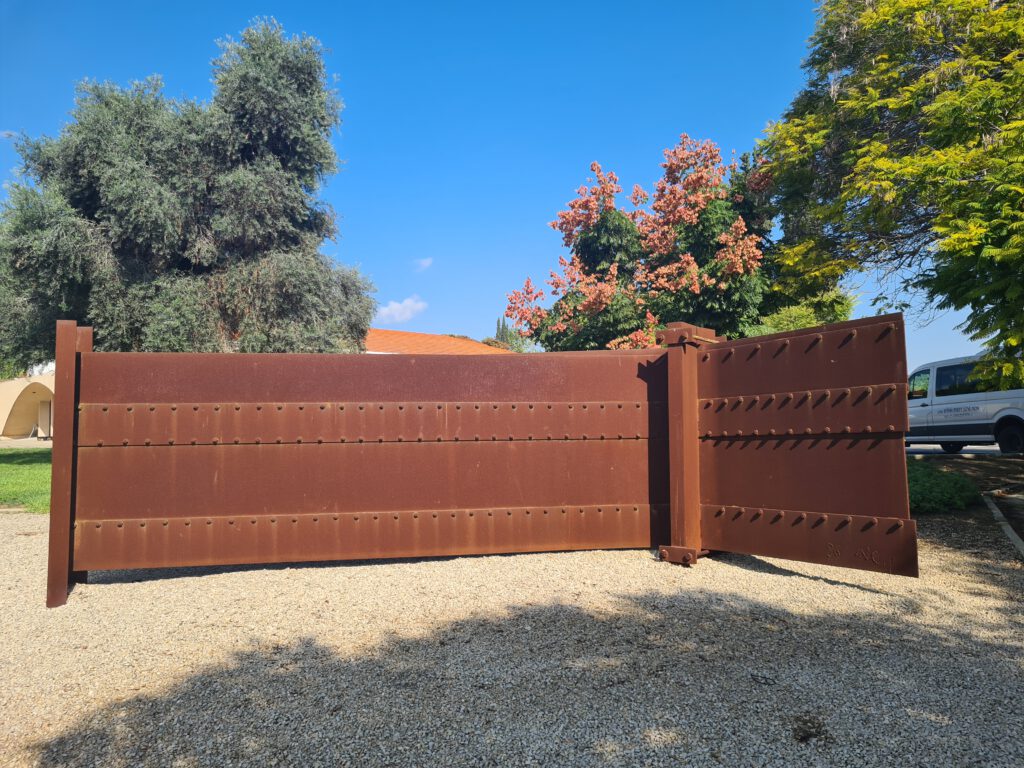The Statue "Syllables" Yad Mordechai

The artist
Yehiel Shemi (1922-2003), an Israeli sculptor and painter who belongs to the group “New Horizons”, a member of Kibbutz Kabri. Shemi led the transition from figurative sculpture to abstract sculpture in iron. He won the Israel Prize for Sculpture in 1986. He was one of the founders of Kibbutz Beit Arava, which was abandoned during the War of Independence.
The story of the materials
The iron plates from which the statue was fashioned were originally from the immigration ship Patria. When they were no longer needed, the artist turned them into a work of art. He blatantly used large and massive screws as a means of connecting the boards. He left the iron itself exposed, rusted while maintaining the rough texture of the material. The sculpture is made of 4 bent horizontal panels and two vertical columns. This sculpture is one of many that Shemi designed in iron, and belongs to a whole series known as “Syllables”.
The design of the statue - sources of inspiration
After the negotiations with Shemi were completed regarding the placing of his statue at Yad Mordechai, the artist went to the location and designed an environmental sculpture that refers to the space in which it would be placed and the story of the place while connecting it to his sources of inspiration. According to Shemi, the horizontal iron plates bring him back to the expanses of the Arava and its landscape, that he saw and absorbed on his way to his first kibbutz, Beit Arava. The layered structure of the landscape is reflected in the layered structure of the sculpture.

The color of the iron and its shades correspond with the colors of the earth. The prominent screws, which are affected by the sunlight and its position in the sky, cast short or long shadows and create an affinity with the spots of color in the mountainous landscape of the Arava. Shemi combined his own memories with the story of the place, the story of Kibbutz Yad Mordechai. The horizontal panels that are connected to each other and correspond with the horizontal structure of the dining room and with the horizontal row of windows of the sports hall reflect the connection to the land, to the place, and symbolize the unity, cohesion and stability of the community.
The bending point in the panels refines the mass and symbolizes the communal embrace. The vertical columns are stable, tying all the panels together, planted with genius in the ground and conveying stability, rootedness and permanence. Only one panel, broke off on one side from its friends and leans aside. This plaque corresponds with the missing petal on the flower on “Beit Yad Labanim”, the sports hall, and represents the members and sons of Yad Mordechai who fell in Israel’s battles and hostilities.

Environmental sculpture
The statue stands on an expanse of white gravel stones and is fenced off with low curb stones. The whiteness of the gravel contrasts with the color of the iron and makes it stand out. The noise of crushed gravel under the foot of the visitor emphasizes the roughness of the material and the rough texture of the sculpture. The viewer walking around the work will be able to notice the changing appearance from every angle, and the perfect correlation between the sculpture and the building in the background. The activity of walking reveals the many faces of the sculpture and its strength reflecting its artistic qualities.
